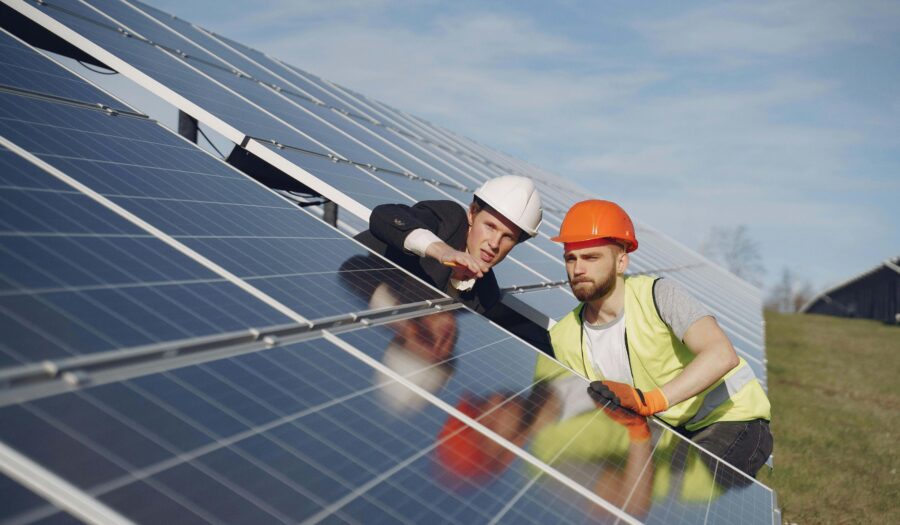Solar Energy Penetration in Southern Africa: A Bright Future Amid Hydro Power Challenges
Southern Africa has long been dependent on hydroelectric power as a significant energy source, especially in countries like Zambia, Zimbabwe, and Malawi. However, with the increasing frequency and intensity of droughts, hydroelectric power generation is under strain, prompting a search for alternative energy sources. Solar energy, with its abundant availability in the region, is emerging as a promising solution to meet the growing energy demand. However, the transition to solar energy faces its own set of challenges.
The Hydro Power Struggle: Droughts and Energy Shortfalls
Hydropower has traditionally played a key role in Southern Africa’s energy mix, providing reliable and clean energy. The Kariba Dam, which sits between Zambia and Zimbabwe, has been a cornerstone of hydroelectric power generation. But in recent years, prolonged droughts have significantly reduced water levels, severely hampering energy production. For example, in 2019, water levels in Lake Kariba dropped to critically low levels, leading to massive power shortages in both countries. Malawi, which relies on hydro for over 90% of its electricity, also experiences frequent power outages due to water scarcity.
These droughts are exacerbating the region’s energy crisis, causing blackouts and load shedding that disrupt industries, economies, and daily life. With climate change expected to increase the likelihood of prolonged dry spells, hydroelectric power is becoming an unreliable source of energy in the region.
The Promise of Solar Energy
Given Southern Africa’s geographical location, it boasts some of the highest solar irradiance levels in the world. Countries like Namibia, Botswana, South Africa, and Zimbabwe are blessed with an average of 2,500 to 3,500 hours of sunshine per year, making solar power a logical and sustainable alternative.
Solar energy has the potential to diversify the region’s energy mix, reduce reliance on hydropower, and create a more resilient energy grid. By harnessing this abundant resource, Southern Africa could significantly increase its energy production capacity, reduce carbon emissions, and improve energy access, especially in remote areas where grid connections are limited.
Recent Developments in Solar Energy Penetration
Several Southern African nations have begun investing in solar energy, recognizing its potential to stabilize energy supplies:
- South Africa is leading the charge with its Renewable Energy Independent Power Producer Procurement Programme (REIPPPP), which has attracted significant investment in solar photovoltaic (PV) plants. The country has set ambitious targets to increase renewable energy in its power mix, with solar energy playing a key role.
- Zimbabwe is rapidly expanding its solar capacity, with the government prioritizing solar energy development to complement hydro and thermal power sources. In 2021, Zimbabwe launched the country’s largest solar power plant, the 100 MW Gwanda Solar Farm, to address ongoing power shortages.
- Namibia and Botswana have also made strides in solar energy. Namibia, with vast desert land and ample sunlight, is focusing on solar energy to reduce its dependence on imported electricity. Similarly, Botswana has recently launched large-scale solar projects aimed at providing both domestic and regional energy.
Challenges to Solar Energy Penetration
Despite its enormous potential, solar energy faces several challenges in Southern Africa:
- High Initial Capital Costs: While solar energy is becoming cheaper, the initial cost of setting up solar farms or distributed systems remains high. Many Southern African nations face economic constraints, making large-scale investment in solar infrastructure difficult without international funding or private sector involvement.
- Energy Storage Limitations: One of the major hurdles to solar energy is the intermittent nature of the resource. Solar power generation is only possible during daylight hours, necessitating effective energy storage solutions. However, advanced battery storage systems are still costly and less accessible, limiting solar energy’s capacity to provide a constant power supply.
- Grid Infrastructure: Many countries in the region have aging and underdeveloped grid infrastructure that may not be equipped to handle a large influx of renewable energy. Expanding and modernizing grid systems to accommodate solar energy will require substantial investment in transmission and distribution networks.
- Policy and Regulatory Barriers: Solar energy development requires a supportive regulatory framework. In many countries, policies related to renewable energy are either outdated or poorly implemented, slowing the pace of solar adoption. Clear regulations and incentives are needed to encourage both local and international investments in solar projects.
- Financing and Investment: Securing financing for large-scale solar projects remains a challenge in countries with fragile economies. Many solar initiatives rely heavily on foreign direct investment, multilateral organizations, or public-private partnerships, all of which are subject to shifting economic conditions and political stability.
The Way Forward
To overcome these challenges and accelerate solar energy penetration, Southern African nations must adopt a multi-faceted approach:
- Policy Reforms: Governments need to create supportive policies and regulatory frameworks that incentivize renewable energy investment. This includes setting clear renewable energy targets, streamlining approval processes, and offering tax incentives or subsidies for solar projects.
- Regional Collaboration: Southern African countries can benefit from greater regional cooperation through bodies like the Southern African Power Pool (SAPP). By integrating solar power generation across borders, countries with abundant solar resources could export excess energy to neighbouring nations facing shortages.
- Investment in Storage Technologies: To address the intermittent nature of solar power, governments and the private sector should invest in cutting-edge energy storage solutions. Affordable battery technologies will enable solar energy to provide consistent power, even during non-sunlight hours.
- Public-Private Partnerships: Governments should continue to encourage partnerships with private companies and international organizations to finance solar projects. These partnerships are crucial for building the infrastructure needed to expand solar energy and reduce dependency on hydroelectric power.
Conclusion
As Southern Africa faces increasing energy challenges due to drought-induced hydro power shortages, solar energy presents a viable and sustainable alternative. While there are hurdles to overcome, the region’s vast solar potential, combined with growing awareness of climate resilience, positions it to lead the way in renewable energy. With the right investments, policy support, and regional collaboration, solar energy can play a transformative role in ensuring Southern Africa’s energy security and economic stability.



Hi, this is a comment.
To get started with moderating, editing, and deleting comments, please visit the Comments screen in the dashboard.